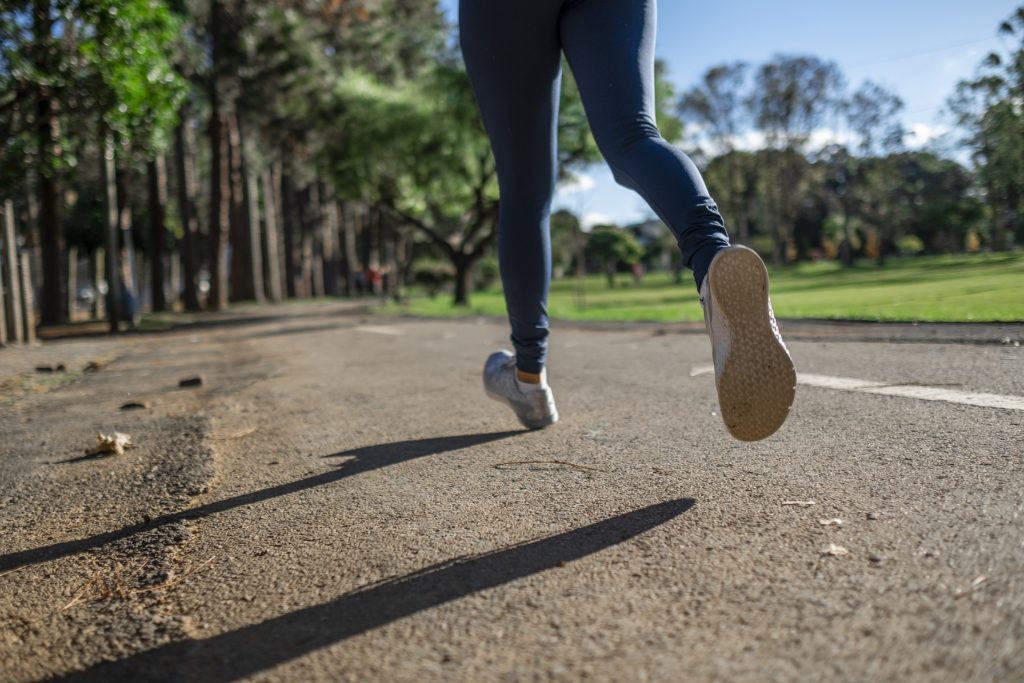Running and walking are both two different types of exercises and have both similar and different health benefits. Walking is more suitable for everyone and this includes elderly people as well.
Whereas, running isn’t something everyone has the capability to do. This is especially true for those who are older or have knee replacement surgery. Whether you prefer running or walking it’s important to know the differences and the similarities that they both bring.
Free Download: 20 Simple Ways To Make Your Lifestyle More ActiveWhich Is Better: Running Or Walking?
Burning Calories
If you’re trying to burn calories faster or lose weight, then running is the better option compared to walking. With walking, you’ll have to walk much longer in order to achieve the same amount of calories burned if you were to run. Running burns about double the amount of calories compared to walking.
Bone Strength
When it comes to bone strength, both running and walking provide healthy BMD (bone mineral density). Walking provides this because it’s classified as a weight-bearing exercise, aerobic activity.
Running provides BMD since it’s a high-impact activity. With walking, you can achieve bone strength from this low-intensity workout since it’s easy and gentle on your joints compared to running.
Walking helps maintain bone mass, helps slow the development of arthritis, it reduces the risk of osteoporosis. Walking helps you to stay mobile later in life in your later years and it increases spinal stability, improves posture, and it lowers the chances of musculoskeletal injuries.
Heart Health
Both running and walking exercise the heart, which is good news. Target heart rate is the speed at which the heart beats during exercise. For some, walking won’t be enough to reach this target.
Running is best if you want to get moving fast and a better way to maintain heart health. However, according to one study, too much running can cause thickening of the heart tissue, causing fibrosis or scarring and this may lead to atrial fibrillation or irregular heartbeats. Prolonged exercise may also lead to “ oxidative stress”, which is a buildup of free radicals that may bind with cholesterol to create plaque in your arteries.
Joint Support
Walking is an easier and more low-impact exercise. It increases blood flow, supports joint health and provides a movement option that decreases pain and stiffness and increases range of motion.
Running is really tough on the joints, especially as compared to walking, and this includes brisk walking. The impact to the knee joints is credible with running and there’s also an increase in injury when running as compared to walking.
This may be why so many elderly people prefer walking instead of running because of the less density impact on the body. Also walking aids in joint fluid circulation, which provides essential oxygen and nutrients.
More Convenient
Walking is more convenient for many compared to running. Walking is a less intense workout. It’s a great way to stay in shape and it’s much easier to get into the groove of things with walking.
- Running is an intense workout that may cause strains on your muscles if you’re not ready for this high intensity workout.
- With walking you can take a brisk stroll around your neighborhood or local park. Walking is more suitable for those who are looking for a low impact yet effective way to burn calories and exercise the heart.
Free Download: 20 Ways To Be More Active
Developing healthier lifestyle habits can be challenging, but you have to ease yourself into it and stick to it. People are often amazed at how small changes can reap huge results. To help you leverage new habits into a lifetime of good health and better fitness download my free report 20 Ways To Make Your Lifestyle More Active. Once you choose a healthy lifestyle, you’ll never have to worry about dieting again.



